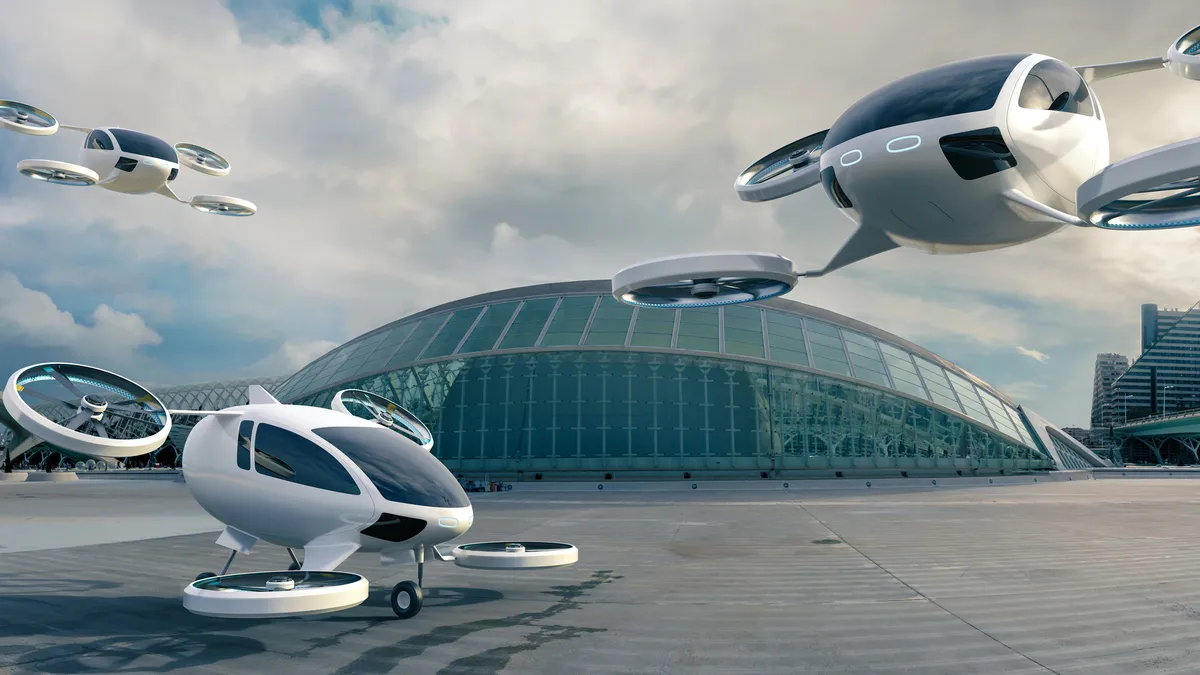While the early focus of air taxi services under development has been on big cities like Chicago, New York City and San Francisco, advanced air mobility could benefit smaller communities and rural regions as well, said Daniel Plaisance, manager of advanced air mobility at the Tulsa Innovation Labs, a nonprofit founded in 2020.

TIL recently announced a partnership with the city of Tulsa, Oklahoma; the Osage Nation and Oklahoma State University to form a new center for advanced air mobility research. Smart Cities Dive spoke with Plaisance to learn more about the center, its potential to transform Tulsa and how these new air services could bring jobs, investments and improved mobility to the region.
Editor’s note: This interview has been edited for length and clarity.
SMART CITIES DIVE: Why Tulsa? How will this region contribute to the development of advanced air mobility?
DANIEL PLAISANCE: We have a huge aerospace history. It's the second-largest employer in the state of Oklahoma. And there's really strong expertise [at OSU] within research and development, with the engineering side of things. We really think that this is a pool we can play in and really compete.
How would the region benefit from this new technology?
Tulsa occupies an interesting position. It's a metro area of about a million people, but it gets very rural very quickly. And what that means in terms of access to goods and services, in terms of transportation infrastructure, there are really gaps. You have places where people go often — northwest Arkansas, Little Rock, Oklahoma City, Wichita, Kansas City — traditional aviation just doesn't serve that. There's not really another way to get there besides driving a personal vehicle.
What role can the Tulsa Innovation Labs play in the region’s economy?
Our goal is to build a strategy to help the city of Tulsa and the surrounding region really coordinate its economic development investments to enable better growth, more economic resiliency and better economic opportunities for people in this region. We have a fair number of workforce programs as well. All of these are funded through a combination of private dollars and public dollars. The city of Tulsa has been quite supportive, and there's a very robust sort of support network from the state.
How are Oklahoma’s traditional industries interested in advanced air mobility?
Our big legacy industries — oil and gas, agriculture, logistics — are the industries that are spending money on this. So we think by brokering the relationship between early-stage innovative, technologically advanced companies and the big, deep-pocketed potential buyers that exist in the region, we have the ingredients necessary to lead the way in deployment. That's a cycle that will just keep going if we can get it right.
What will air mobility look like in Oklahoma 10 years from now?
Oklahoma has, per capita, among the highest ratio of general aviation airports and public-use airports in the country, scattered all across the state, including in a lot of hard-to-reach rural areas.
If I had to speculate, in 10 years there will be a variety of service types. I hope we really do see some of the access to rural and remote areas. I'm encouraged that there are really smart folks thinking about those kinds of models, and I hope that that bears out.












